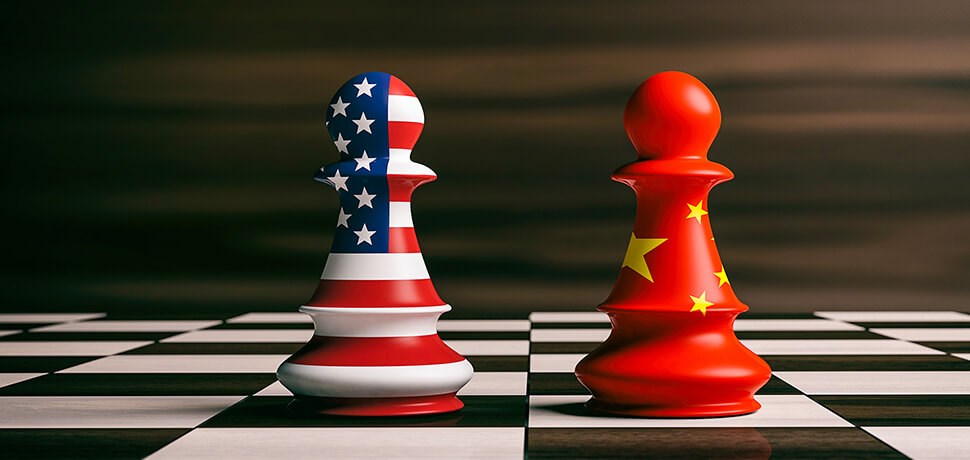
The deficit, which reflects the combined balances on trade in goods and services and income flows between US residents and residents of other countries, narrowed by $8.0 billion, or 5.9%, to $128.2 billion in Q2:2019, according to the US. Bureau of Economic Analysis (BEA). This was down from a revised Q1:2019 deficit of $136.2 billion.
The US instigated trade war has reduced the US’s trade deficit by 10% for the first seven months to July 2019 compared with the same period the previous year. At this point, US exports to China were third largest after Canada and Mexico while imports from China were largest and 50% greater than the next largest, which was Mexico.
The US and China have been locked in a trade war since July 2018 as part of his “America First” policy. A year later, US President Trump followed through on months of threats to impose sweeping tariffs on China for its alleged unfair trade practices. To date, the US has imposed tariffs on US$550 billion worth of Chinese products. In response, China has set tariffs on US$185 billion worth of imported US goods.
In mid-September 2019, the US Trade Representative (USTR) issued three notifications that collectively exempt 437 Chinese goods from US tariffs. The excluded items mainly consist of types of equipment or material, such as organic synthetic materials, daily necessities, chemicals, textiles, mechanical and electrical equipment, chemical products, and steel products.
Recently, China lodged a complaint against the US over import tariffs affecting US$300 billion of Chinese exports, according to China’s Ministry of Commerce. This is the third lawsuit that China has brought to the WTO challenging US tariffs against Chinese imports. Under WTO rules, the US. has 60 days to try to settle the latest dispute. The US previously published a written defence for the first of the three legal cases brought by China, asserting that the current set of tariffs should not be judged at the WTO.
The complaint has been lodged with the WTO Dispute Settlement Body, sometimes referred to as the supreme court of world trade. The Dispute Settlement Body (DSB) itself is in crisis following months of deadlock triggered by the US. The US has refused to approve any new judges for the body’s appellate division, accusing the DSB of overstepping its authority by issuing broad rulings that Trump says violate national sovereignty. If no new judges are approved by the end of the year, the appellate branch will not have the quorum required to hear cases, due to mandatory retirements.
With each round of trade tariff increases the collateral damage in the global economy mounts. The headwind generated by the trade war between the US and China is now the main factor likely to slow developed economies beyond their natural long-term growth rates even with the support of massive monetary accommodation.
The US-China conflict is not playing out in a vacuum. The escalating trade war is eroding business confidence, reducing investment, disrupting supply chains, complicating business inventory management, and exaggerating pricing volatility.
There were reports in late September that the US. was considering investment restrictions on Chinese companies in the US. The US administration appears to be exploring mechanisms to restrict capital flows into China and to limit Chinese companies from listing and trading on US. exchanges. It could force the delisting Chinese stocks in the US. and limit government pension funds’ investments in the Chinese market.
This marks a clear widening of the US-China conflict and expands the impact from Main Street to Wall Street. In September 2019, China, in an attempt to soften the negative impact of the economic slowdown and trade war, scrapped its quota system for foreign institutional investment. Any capital market restrictions imposed by the US would severely restrict potential flow of international capital into China even after China scrapped caps on foreign purchase of domestic stocks and bonds.
Until recently, US investment in China’s domestic markets was limited, with residents holding only about $203 billion of mainland financial assets as of June 2019, according to the US. Treasury. China also recently launched the so-called Star board in Shanghai with looser trading rules to encourage China’s start-ups to list on local exchanges rather than in the US. or Hong Kong.
For now, though major Chinese companies depend on raising capital in the US. The total market capitalisation of Chinese companies listed on US. exchanges is about $1.2 trillion, according to a report from the US-China Economic and Security Review Commission.
President Trump’s trade war is driven by US. anxiety over China’s rise in a single generation to become the second largest economy in the world, rather than by economic rationality. As the trade tensions escalate so do discussions about the Thucydides trap. Harvard Professor, Graham Allison coined this phrase in 2012 to capture the idea that the rivalry between an established power and rising one often ends in war.
The US-China tariff war has established a new reality in international trade relations and introduced systemic risks to businesses. Companies who are overly dependent on China for sourcing, manufacturing, or both, find themselves confronting rising costs, fluctuating tariffs, market restrictions, tighter regulatory oversight, and reduced profits. Firms that ignore these risks or fail to draw up contingency plans will be compromising on their long-term stability and financial security.
The escalating trade war is a strengthening headwind for global growth, however unintended consequences are spilling over into geopolitics.
The threats of a potential expansion from quantitative to qualitative trade restrictions in the current escalating trade war are worrying. There is a practical limit to the level of trade tariffs after which the higher tariffs would hurt the importer more than exporter, however qualitative retaliation is open-ended in nature and could create much more uncertainty in the market than simple tariffs.